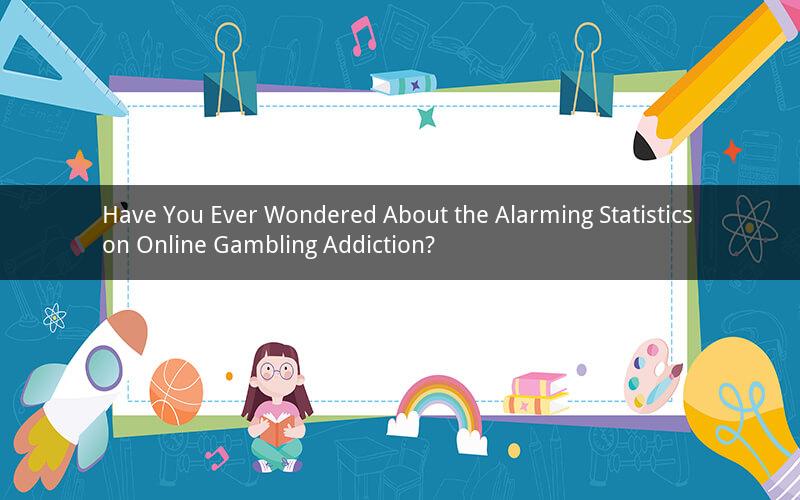
Table of Contents
1. Introduction to Online Gambling
- The Evolution of Online Gambling
- The Convenience and Accessibility Factor
2. Understanding Online Gambling Addiction
- Defining Online Gambling Addiction
- The Psychological and Social Impacts
3. Statistics Unveiled
- Global Prevalence of Online Gambling Addiction
- Age and Gender Distribution
- The Economic Toll
4. Comparative Analysis
- Comparing Online and Traditional Gambling
- The Role of Technology in Addiction
5. Case Studies and Real-Life Stories
- The Struggles of an Addict
- The Path to Recovery
6. Preventive Measures and Support Systems
- Educational Programs
- The Importance of Self-Regulation
7. Conclusion
- The Urgency of Addressing Online Gambling Addiction
- The Future of Online Gambling and Addiction Prevention
---
1. Introduction to Online Gambling
Online gambling has come a long way since its inception. What started as a niche market for tech-savvy individuals has now become a multi-billion-dollar industry. With the advent of high-speed internet and the proliferation of smartphones, the convenience and accessibility of online gambling have reached unprecedented levels. Unlike traditional casinos, online platforms offer a 24/7 service, allowing users to place bets from the comfort of their homes or while on the go.
2. Understanding Online Gambling Addiction
Online gambling addiction, often referred to as Internet Gambling Disorder (IGD), is characterized by an inability to control or stop gambling despite harmful consequences. This addiction can have profound psychological and social impacts, leading to financial ruin, strained relationships, and even mental health issues. According to the American Psychiatric Association, individuals with IGD often experience symptoms similar to those of substance abuse disorders.
3. Statistics Unveiled
- Global Prevalence: Studies have shown that the global prevalence of online gambling addiction ranges from 0.5% to 5.8% of the general population. In some countries, the rates are even higher.
- Age and Gender Distribution: The majority of online gamblers are male, with the peak age group being 18-35. However, women are increasingly becoming part of this demographic.
- The Economic Toll: The economic impact of online gambling addiction is staggering. In the United States alone, it is estimated that online gambling addiction costs the economy billions of dollars each year in lost productivity, healthcare expenses, and legal fees.
4. Comparative Analysis
When comparing online and traditional gambling, several factors come into play. Online gambling offers a wider variety of games, higher stakes, and the allure of anonymity. This has led to a more rapid escalation in addiction, as players can easily lose track of time and money. In contrast, traditional casinos have physical limitations that can act as a deterrent to excessive gambling.
Technology also plays a significant role in the rise of online gambling addiction. The ability to gamble from anywhere at any time creates a sense of urgency and urgency that can be difficult to resist. Classic examples, such as Charles Dickens' "Great Expectations," where the protagonist becomes ensnared in the world of betting, serve as a stark reminder of the dangers of gambling addiction.
5. Case Studies and Real-Life Stories
The struggles of an online gambling addict can be harrowing. One such story involves a young man who lost his entire savings and even turned to crime to fund his gambling habit. However, with the help of support groups and therapy, he was able to overcome his addiction and rebuild his life.
The path to recovery is often long and arduous. Many addicts require multiple attempts before they can fully recover. However, the stories of those who have made it through to the other side offer hope and inspiration.
6. Preventive Measures and Support Systems
Addressing online gambling addiction requires a multifaceted approach. Educational programs that inform the public about the risks of online gambling can be effective. Additionally, self-regulation tools, such as deposit limits and time-out features, can help prevent excessive gambling.
The importance of support systems cannot be overstated. Gamblers Anonymous and other support groups provide a safe space for individuals to share their experiences and seek help. Therapy, both individual and group, can also be beneficial in addressing the underlying psychological issues that contribute to addiction.
7. Conclusion
The alarming statistics on online gambling addiction highlight the urgent need for action. As the online gambling industry continues to grow, it is crucial to implement effective preventive measures and support systems. By raising awareness, providing education, and offering resources, we can help mitigate the harmful effects of online gambling addiction and create a safer, more responsible gambling environment.
---
FAQs
Q1: What are the most common signs of online gambling addiction?
A1: Common signs include losing track of time while gambling, feeling restless or irritable when not gambling, prioritizing gambling over other responsibilities, and continuing to gamble despite negative consequences.
Q2: How can I help someone who is struggling with online gambling addiction?
A2: Offer support, encourage them to seek professional help, and be patient. It's important to understand that recovery is a long process, and setbacks are common.
Q3: Are there any legal measures in place to prevent online gambling addiction?
A3: Yes, many countries have implemented laws and regulations to protect individuals from the harmful effects of online gambling. These measures include age verification, self-exclusion programs, and deposit limits.
Q4: Can online gambling addiction be treated?
A4: Yes, online gambling addiction can be treated. Treatment options include therapy, support groups, and self-help programs. In some cases, medication may also be prescribed.
Q5: Is online gambling always addictive?
A5: No, not everyone who gambles online will develop an addiction. However, the convenience and accessibility of online gambling can increase the risk, especially for individuals who are prone to addiction.